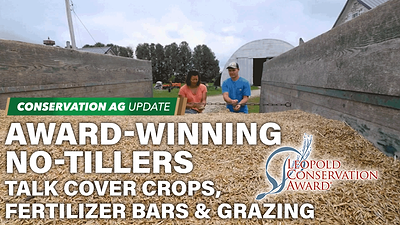Hybrids that were susceptible and highly susceptible to Goss’s Wilt had increased yields under strip-tillage and conventional tillage vs. no-till in a 2010 Monsanto study in Nebraska.
The increased yield of susceptible and highly susceptible hybrids under strip-till and conventional-tillage systems may be due to a reduction in initial inoculum and the subsequent reduction in overall disease pressure.
Goss’s Wilt is caused by the bacteria Clavibacter michiganensis subsp. nebraskensis, which overwinters on crop residue. Bacteria enter plants through open wounds created by strong wind, blowing sand or hail.
Crop rotation, tillage and use of resistant hybrids have been effective in helping to manage this disease. The purpose of the study was to evaluate how hybrids with different tolerances to Goss’s Wilt, yield under disease pressure and the role that tillage may play in maximizing yield potential when infection occurs.
Study Guidelines
Testing was conducted at the Monsanto Learning Center near Gothenburg, Neb., to evaluate tillage and hybrid effects on Goss’s Wilt infection. Three corn hybrids with different disease ratings for Goss’s Wilt were planted on May 3:
- Hybrid 1: rating = 2 (tolerant)
- Hybrid 2: rating = 4 (susceptible)
- Hybrid 3: rating = 7 (highly susceptible)
Each of the hybrids was planted into three different tillage practices: strip-till, no-till and conventional tillage. Plots were treated with a post-emergence application of Roundup PowerMAX at 22 ounces per acre and Degree Xtra at 3.5 quarts per acre.
A storm with high winds and hail occurred on July 18 when plants were at the VT growth stage.
Results
The hail storm injured corn plants. Within a week, symptoms of Goss’s Wilt could be seen on the susceptible and highly susceptible hybrids. Hybrid 1 (tolerant) did not show any symptoms of Goss’s Wilt during the season.
Disease development on Hybrid 2 eventually reached a plateau.
Goss’s Wilt continued to develop and spread on hybrid 3 throughout the remainder of the growing season.
Hybrid 3 yielded the least, with the lowest yield occurring under no-till conditions. Hybrid 1 had the highest yield in both no-till and strip-till systems. Hybrids 1 and 2 had comparable yields under conventional tillage. Yields of Hybrids 2 (susceptible) and 3 (highly susceptible) increased as the level of tillage increased from no-till to conventional tillage.
Testing at the University of Nebraska has demonstrated that residue management is key for controlling Goss’s Wilt due to the fact that inoculum overwinters in diseased tissue remaining on the soil surface.
When infested residue is buried, fewer bacteria are able to survive and act as initial inoculum during the next growing season.
The results of this study support these findings from the University of Nebraska. These results also agree with studies at the University of Nebraska where the use of resistant hybrids was found to make a significant difference in managing Goss’s Wilt and maximizing yield potential under disease pressure.
Studies in southwest Nebraska have shown a difference of 65 bushels per acre between susceptible and resistant hybrids when Goss’s Wilt was present. In this study at Gothenburg, there was a difference of 60 bushels per acre, which was equal to a 40% yield reduction.
Based on this data, hybrids that are highly susceptible to Goss’s Wilt should be avoided in corn-on-corn situations and no-till management systems where the threat of Goss’s Wilt is present.
Hybrids that are less susceptible to Goss’s Wilt may be able to yield well in rotation with other crops and in strip-tillage or conventional-tillage management systems. In dry areas or fields prone to erosion, the benefits of conservation tillage to optimize soil moisture and reduce soil erosion should be considered when determining tillage practices.





